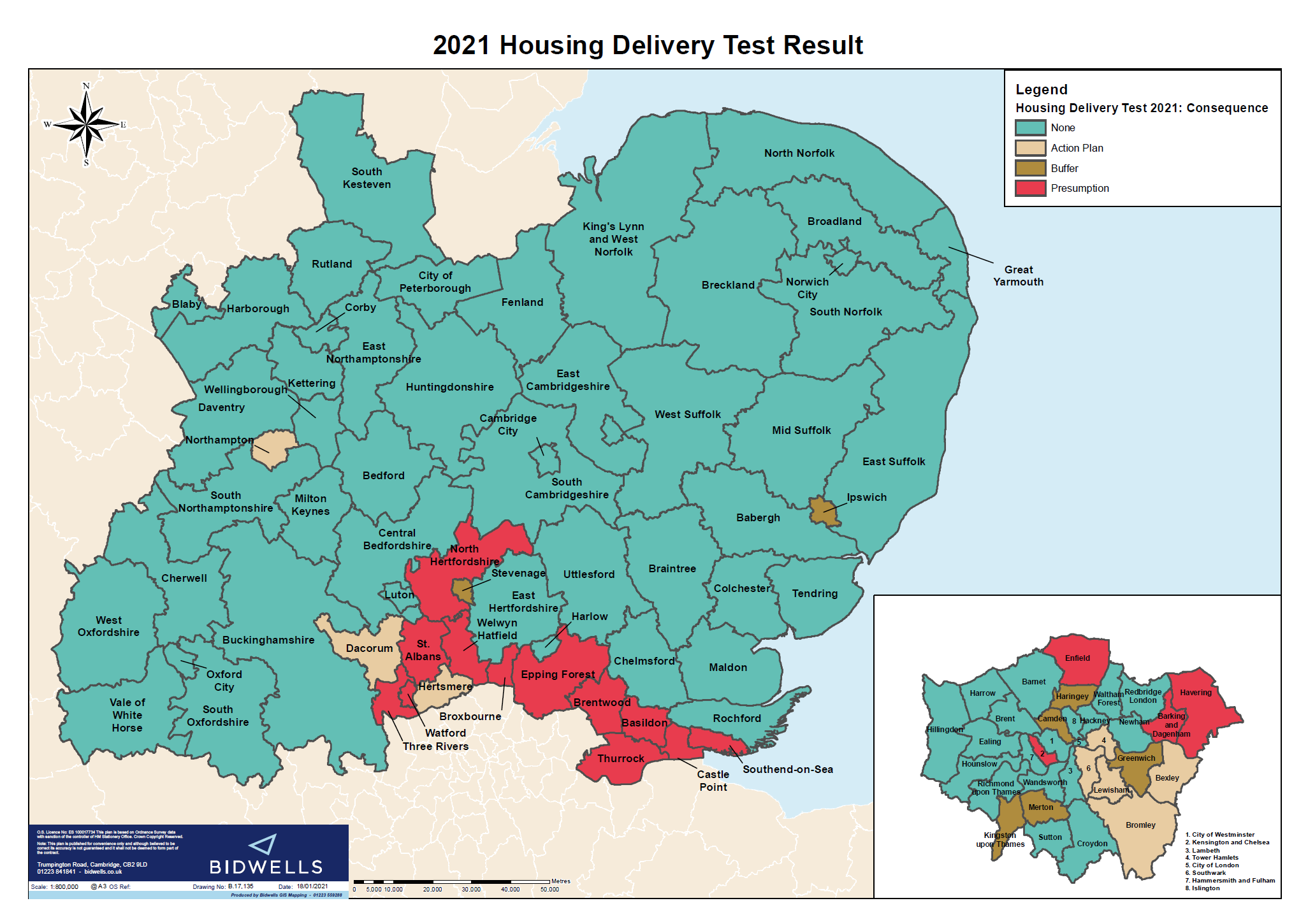What is the Housing Delivery Test?
The HDT is an annual measurement of housing delivery in each local planning area which measures net homes delivered against the homes required over the previous three years, using national statistics and local planning authority data. It was introduced in 2018 as a monitoring tool to encourage LPAs to deliver more housing.
The HDT engages the presumption in favour of sustainable development where insufficient homes have been built over the previous three-year period, irrespective of whether an LPA can demonstrate a five year supply of deliverable housing sites.
The following sanctions apply
- If housing delivery was less than 95% of the housing requirement, an action plan should be prepared to assess the cause of under-delivery and identify actions to increase delivery in future years.
- If housing delivery was less than 85% of the housing requirement, in addition to preparing an action plan, a 20% buffer is added to the calculation of the five-year housing land supply.
- If housing delivery was less than 75% of the housing requirement, the presumption applies, in addition to preparing an action plan and applying a 20% to the five-year housing land supply.
The above sanctions will apply until the release of the next HDT results the following year.
The annual HDT results provide LPAs with a fixed clear set of results for the next 12 months in contrast to the more fluid test of meeting a five-year housing land supply – although two authorities (South Kesteven and Sunderland) have recently succeeded in fixing their five year supply for a year through approval of their Annual Position Statements.
While the broad methodology of the HDT remains the same each year, there have been some adjustments to reflect the disruption the Covid-19 pandemic has caused. Accordingly, the housing requirement has been reduced to the equivalent of an 8-month period for the 2020/21 monitoring year and an 11-month period for the 2019/21 monitoring year.
There is no doubt that the early stages of the Covid-19 pandemic had an impact on construction resulting in some level of disruption to housing delivery. However, accurately quantifying that period of time is difficult – a significant amount of work on construction sites was halted throughout April and May 2020 but, after that, it could be argued that activity rapidly increased when the economy reopened and both developers and LPAs adjusted to new ways of work after the easing of the first lockdown. A five month reduction over two years seems, therefore, generous in that respect and some LPAs will have benefited.
What do the 2021 HDT results mean?
The key headlines from the latest results are:
- 228 LPAs face no action, up from 217 LPAs in 2020.
- 24 LPAs will be required to prepare only an action plan, down from 33 LPAs in 2020.
- A further 20 LPAs will also be required to apply a 20% buffer to their five-year housing land supply, up from 19 LPAs in 2020.
- The presumption in favour of sustainable development has been triggered in 51 LPA areas across England, down from 55 in the HDT 2020 results.
Further analysis from Bidwells' socioeconomics team found the following outcomes
- Redbridge is the most improved LPA having gone from being automatically subject to the presumption to passing the test, although it is understood that this has been questioned by Redbridge themselves.
- Gateshead is also no longer subject to the presumption but must continue to maintain an action plan.
- Broxtowe, Dover, Oldham and North Somerset have improved and no longer require a 20% buffer, although they must continue to maintain actions plans.
- Adur, Bolton, Haringey, Ipswich, Poole, Purbeck, Southwark, Stevenage, Thanet, Tower Hamlets and Trafford have also improved as they too are no longer automatically subject to the presumption but they still require a 20% buffer on their five-year housing land supply and must maintain action plans.
- Having previously passed the test or only required to prepare an action plan, the situation for the LPAs of Kingston upon Thames, Merton, Somerset West and Taunton and Swale have worsened and they now require a 20% buffer.
- Bournemouth, Bradford, Canterbury, Mole Valley, Portsmouth, Slough, South Tyneside, Tonbridge and Malling, Walsall, Windsor and Maidenhead and York’s positions have worsened and they are now automatically subject to the presumption.
The results for Bidwells’ core operational areas are shown spatially below.























